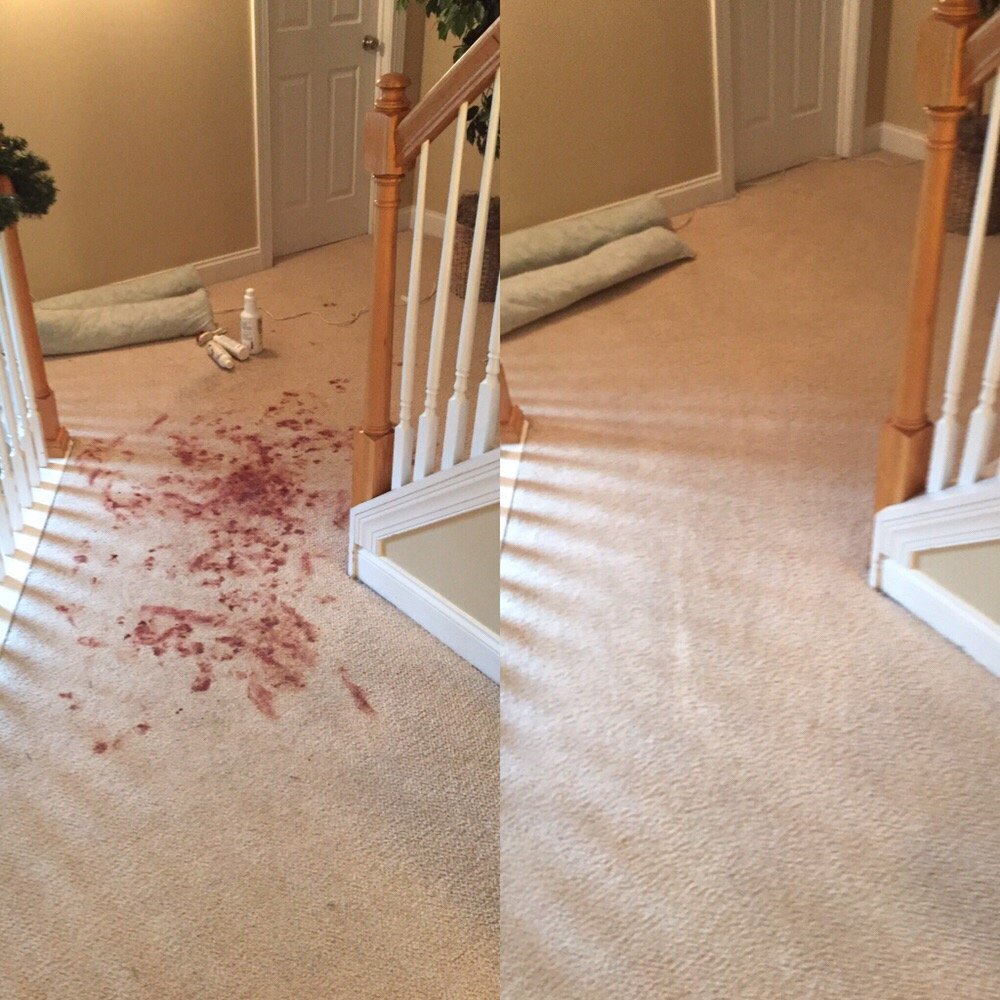
Before I get into a practical solution for removing blood stains, there are just two items of concern that should be discussed. Both issues have a consideration for your health. One is the volume of blood. A few drips of blood from a small cut or your dogs paw should be fairly well contained to the surface of the fibers and the likelihood of a complete removal and sterilization seems very likely. On the other hand, if the blood stains are of a much larger issue and blood seeps deep into the fibers or perhaps into the backing of the rug, there could be some problems in the complete removal. Remember, cleaning is a process that physically removes contamination, including some microorganisms and is an essential step before effective disinfection or sterilization can be performed. Cleaning does not necessarily destroy all microorganisms, even if a surface looks cleaner. The other concern is knowing where the blood came from. You may know the health of yourself or your child but what if this is from an animal that got into your home and died. A mouse or other animal as well as a stranger that you really don’t know that well could carry diseases, bacteria or other microorganisms that could pose a health threat if not completely removed and sterilized. Just something to think about.
Now, sometimes we accidentally cut ourselves, get a bloody nose or in some way manage to get blood on our carpet or upholstery. This is quite often an easy stain to remove with a little patience. It is important to try to remove it as soon as possible and it is always advised to use latex gloves as a protective procedure. The best approach is to use a clean white cotton cloth. Wet this with cold water so it is almost drippy wet. The cold water is an important step. Blot the blood stain, turning the cloth to clean sections several times. Do not rub. Rinse cloth and repeat. When done blot as dry as possible to prevent any over wetting, which could lead to other problems. Even if you think you got it all out, when it dries there is a good chance that any residual, no matter how little, will wick back to the surface, being lighter but perhaps a larger area. This is normal. Again, repeat the same procedure with the damp cloth. This will usually remove any remaining blood. I do not suggest you try any form of cleaners or detergents unless you know that that detergent is safe for the fibers you are using it on and you also have equipment to rinse any residue of the detergent out of the fibers. Since blood is a protein stain and fibers like wool and silk are also protein fibers, any enzymes used to break down the blood stain could also do damage to these fibers if not totally rinsed. As far as sterilization goes, on soft materials such as carpets and upholstery it is advised to follow up with a thorough steam cleaning providing it is safe to the fabric since alternative sterilization procedures involving bleaches or other chemicals could have a disastrous effect on the fibers. This should then be followed up using a product that is safe on your particular fibers with some anti-microbial properties to help sanitize the area as thoroughly as possible. Please note that even when these steps are followed there is no guarantee that the threat of blood borne pathogen exposure is 100% eliminated. If you are not comfortable trying to remove a blood stain, call us, and we will gladly resolve these type of stains for you. You can either call us directly at 804-539-9337 or visit our web site at www.spicnspancarpet.com
Blood becomes much harder to remove once it has dried. Get started as soon as possible for the best chance at reviving your carpet without damage. These treatments are listed roughly from the most gentle treatment, to the strongest. You’ll often need to resort to strong treatments if the blood has dried, but be aware that these may damage or discolor your carpet. Be patient and try the gentle methods first.